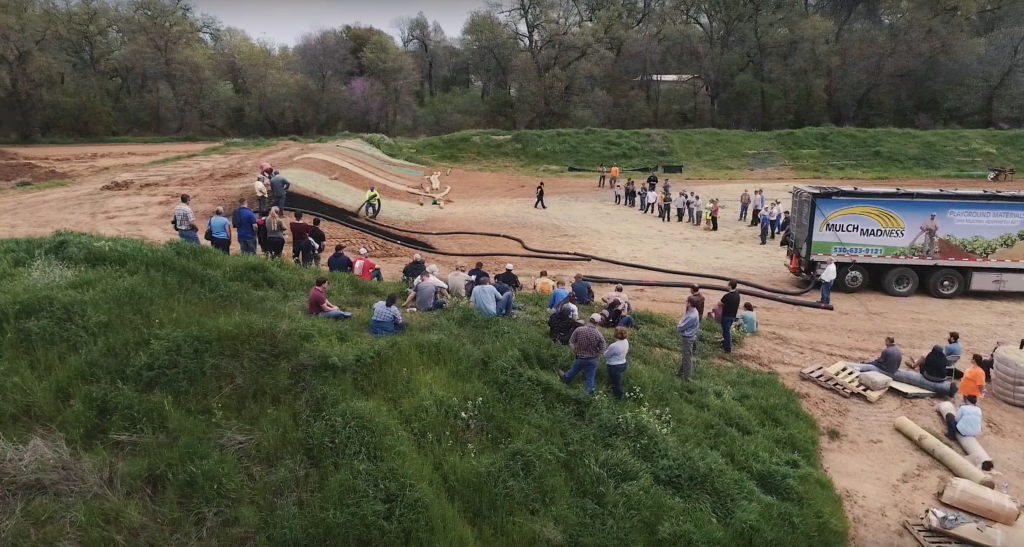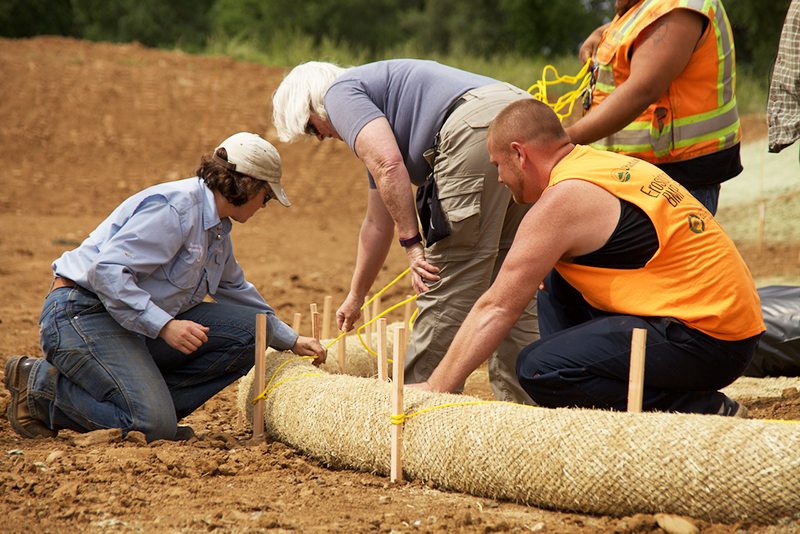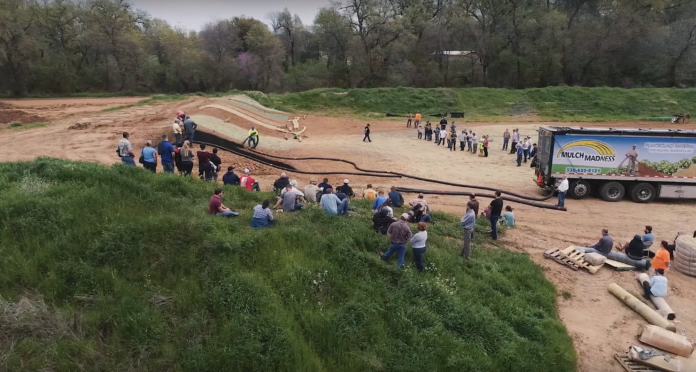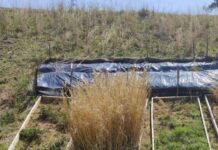Erosion Control Training Facility Supports Hands-On Learning
By John McCullah, CPESC
Erosion and sediment control professionals often say—tongue in cheek—that, “The art and science of best management practices (BMP) selection and implementation isn’t rocket science. It’s much more complicated!”
Actually, effective erosion and sediment control work is part tradecraft and part certified professional—someone who has been trained on the complex regulations and the myriad of stormwater pollution prevention plan (SWPPP) protocols. Many trades such as construction, earthmoving, and grading and landscaping depend on an apprentice and journeyman relationship. There are several educators in the industry that are clamoring for prerequisite courses on the BMPs alone —courses that provide the theory of BMPs, including Stokes law, continuity equation and hydrologic soil groups, coupled with hands-on instructional pedagogy.

The Clean Water Act states that BMPs can be a collection of rules, methodologies, protocols, and operating procedures. SWPPP management protocols that address things like knowing when to sample, how to designate the qualifying storm event, and how to file inspection reports are important, but the as-built, physical soil erosion and sediment control BMPs, such as erosion control blankets, sediment barriers, and hydromulching are the real tools of compliance. Unfortunately, this level of understanding of the actual constructed BMPs requires experience. Without the apprentice/journeyman relationship, the training emphasis will require different pedagogy— hands-on experiential based education geared to adult learning.
The Shasta College Erosion Control Training Facility (ECTF) is gaining worldwide recognition for its unique capacity to provide hands-on training on soil erosion and sediment control BMPs. Built in 2007, the six-acre (2.4 ha) ECTF is designed with slopes, drainage channels, sediment ponds, and bioswales to serve as a learning laboratory.

The school’s Watershed and Erosion Control Practicum class uses the ECTF as the “lab” for students pursuing a degree in agriculture natural resource (AGNR) programs as well as students pursuing a heavy equipment operators certificate.
The ECTF is not only a training ground for the college’s vocational education programs, but it also provides a field training site for an annual erosion and sediment control BMP Summit at Shasta College.
The BMP Summit is a two-day annual event that is usually held during spring break. One day of classroom learning and one day of field demonstrations of 12 or more of the most widely-used BMPs provides both theory and the hands-on experience. BMPs demonstrated include hydromulching, erosion control blankets (ERC), turf reinforcement mats (TRM), surface roughening, skimmer basin, fiber rolls, compost socks, straw mulching with tack, silt fence, and stabilized construction entrance.

The ECTF has hosted more than five annual BMP Summits. The first event in 2008 was limited to California Department of Transportation maintenance workers, but attendance was expanded to include city, county, and state regulators in 2009. Expansion beyond government agencies continues. A California SWPPP management company, that is committed to employee training, has found the Shasta College experience so valuable that they have enrolled over two dozen staff to the annual trainings.
Events held in 2016 and 2018 hosted more than 12 product exhibitors that set up displays and showcased products in the field. In addition to summit attendees, Shasta College has hosted guests from around the nation and the world—the most distant attendees traveled from the Mariana Islands, Malaysia, and France.

In 2016, Shasta College and the Western Chapter of IECA hosted delegates from the French National Agency for Water and Aquatic Environments (Onema) on a technology transfer mission. The delegates were tasked with developing an erosion and sediment control manual for the agency.
An added benefit of the Summit is AGNR student participation and continued learning as they help develop and set up the site for the event. They receive a scholarship to attend the event, which leads to an unanticipated benefit as participating students get to “rub shoulders” with industry professionals.
The technology transfer combined with “hands-on learning” have proven to be extremely effective. One guest from France praised the training, saying that she enjoyed being able to hear the theory and immediately see the practice applied.

About the Expert
John McCullah, CPESC, watershed geologist, owns Salix Applied Earthcare LLC, a consulting firm in Redding, California. A certified professional in erosion and sediment control since 1986, he has spent three decades developing and implementing BMPs for a variety of environments and as an adjunct instructor at Shasta College. McCullah and SalixAEC, along with their partner BlinkWorks produce the erosion control training video series Dirt Time. A new generation of training videos have been available since 2016, dirttime.tv partnered up with Kevin Ernst and Haven Falls Motion Pictures.
Want to Take a Look?
Want to see Shasta College’s Erosion Control Training Facility (ECTF) in action and hear from BMP Summit participants? Go to https://youtu.be/zAz71FgysM8 and https://youtu.be/vsWqLbNytBo to learn more about the hands-on ECTF.













